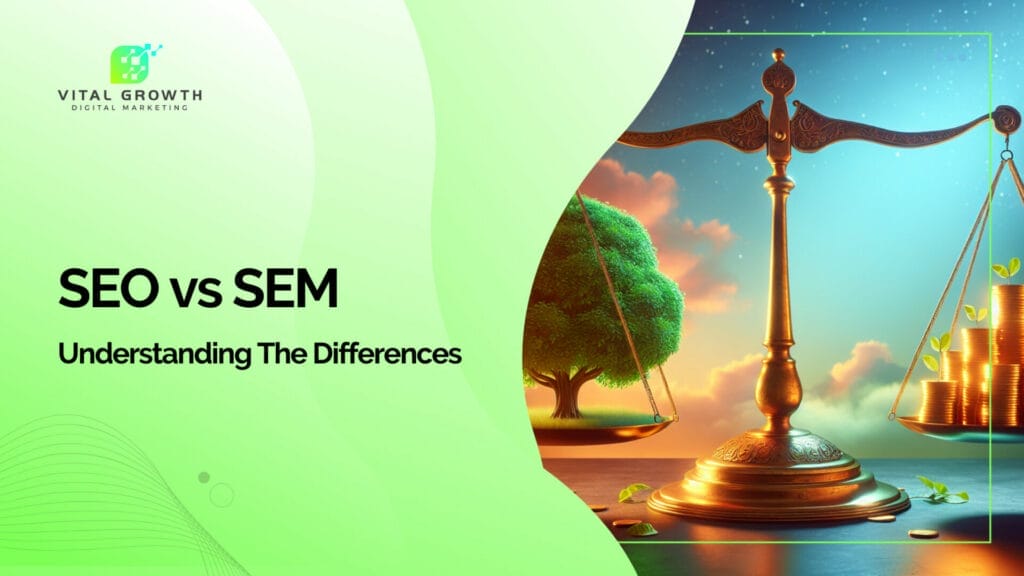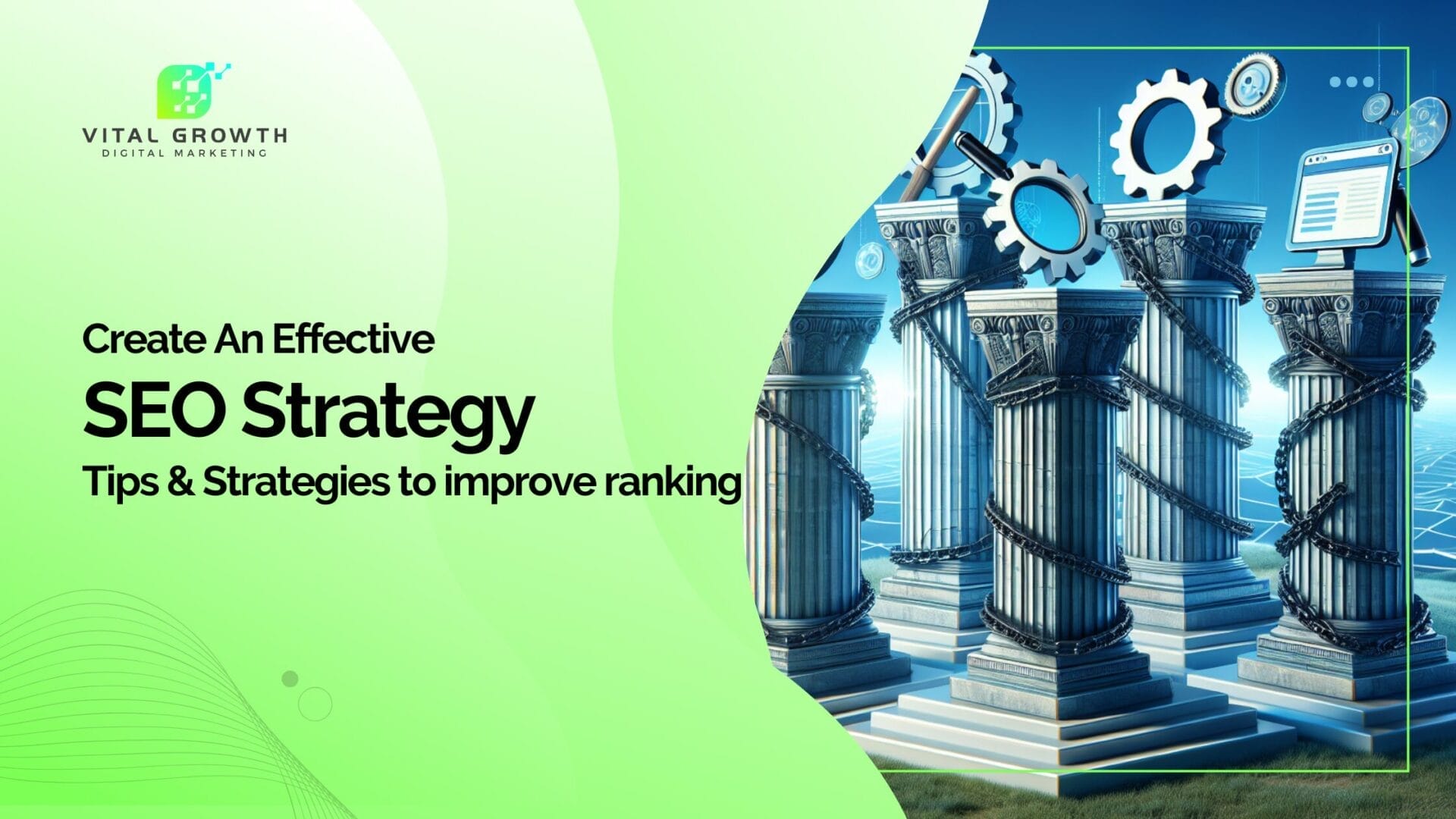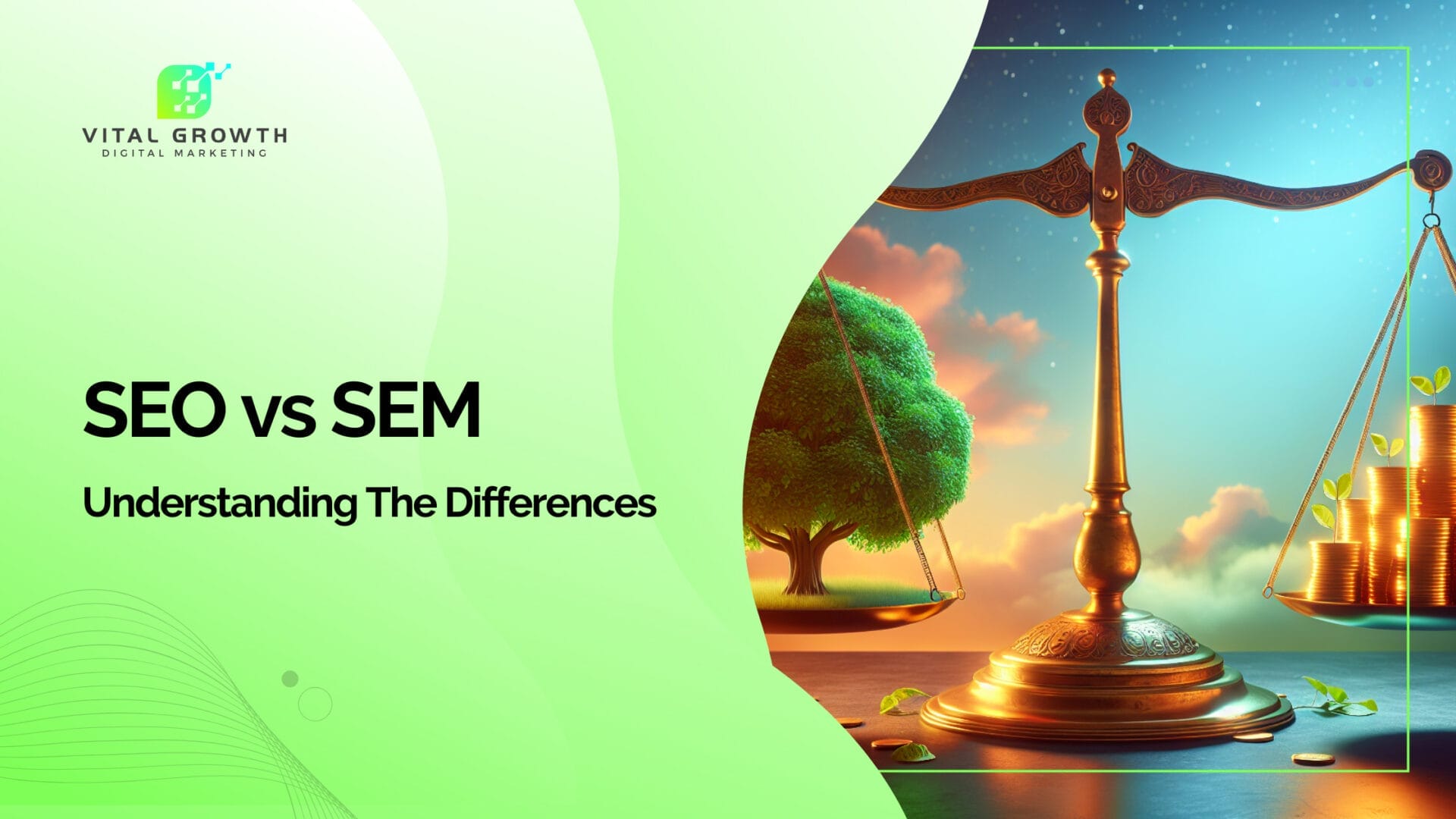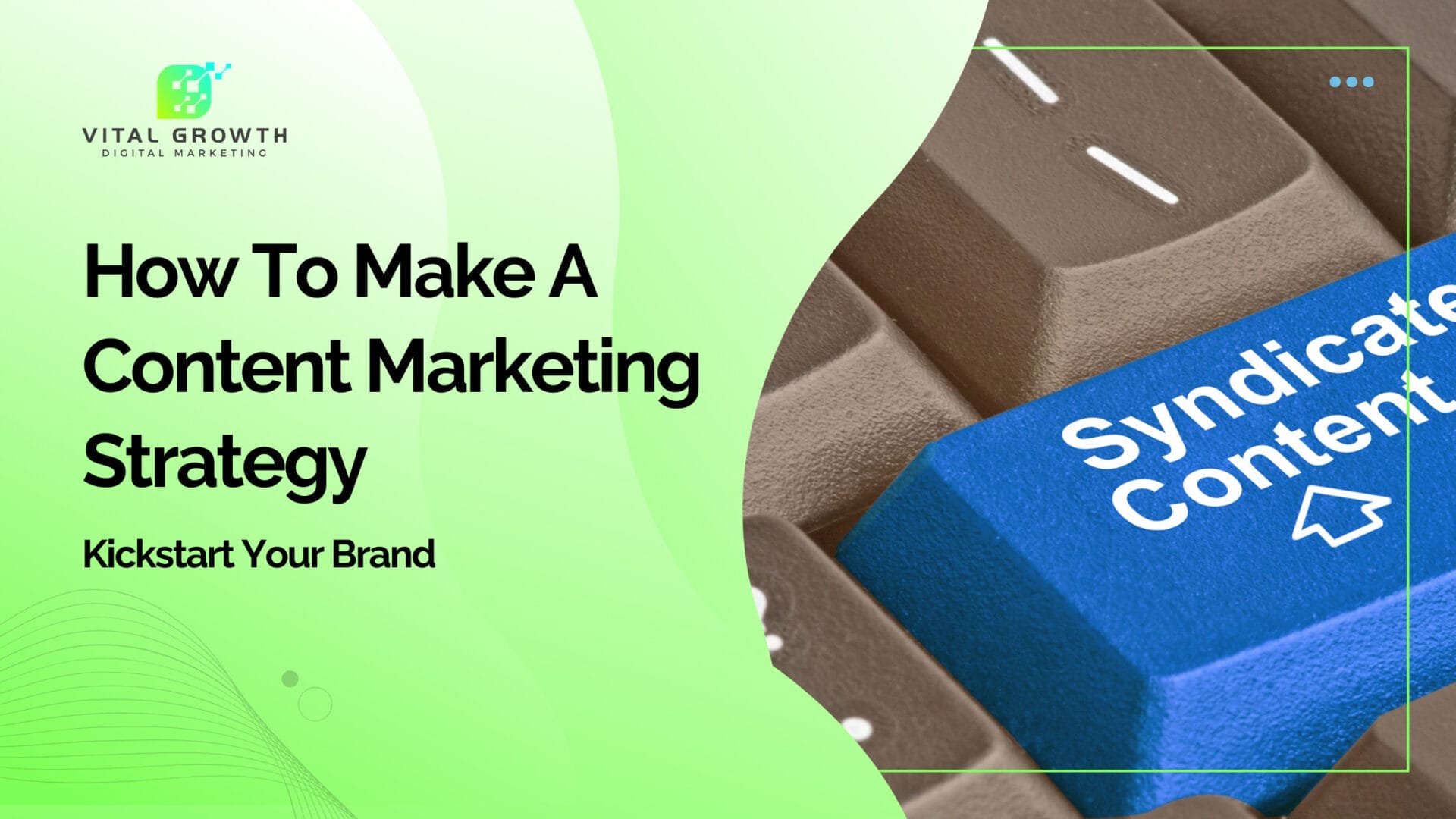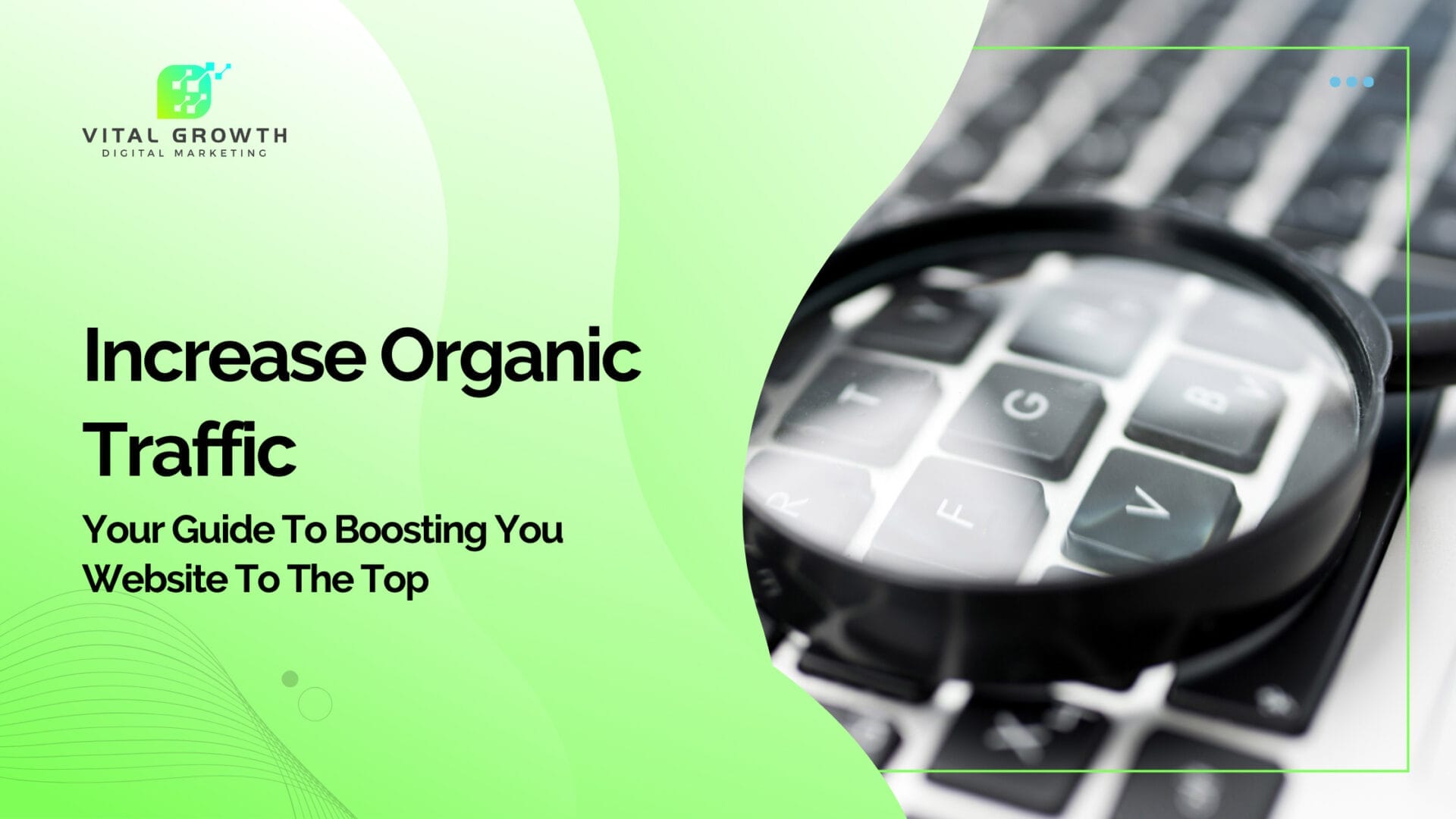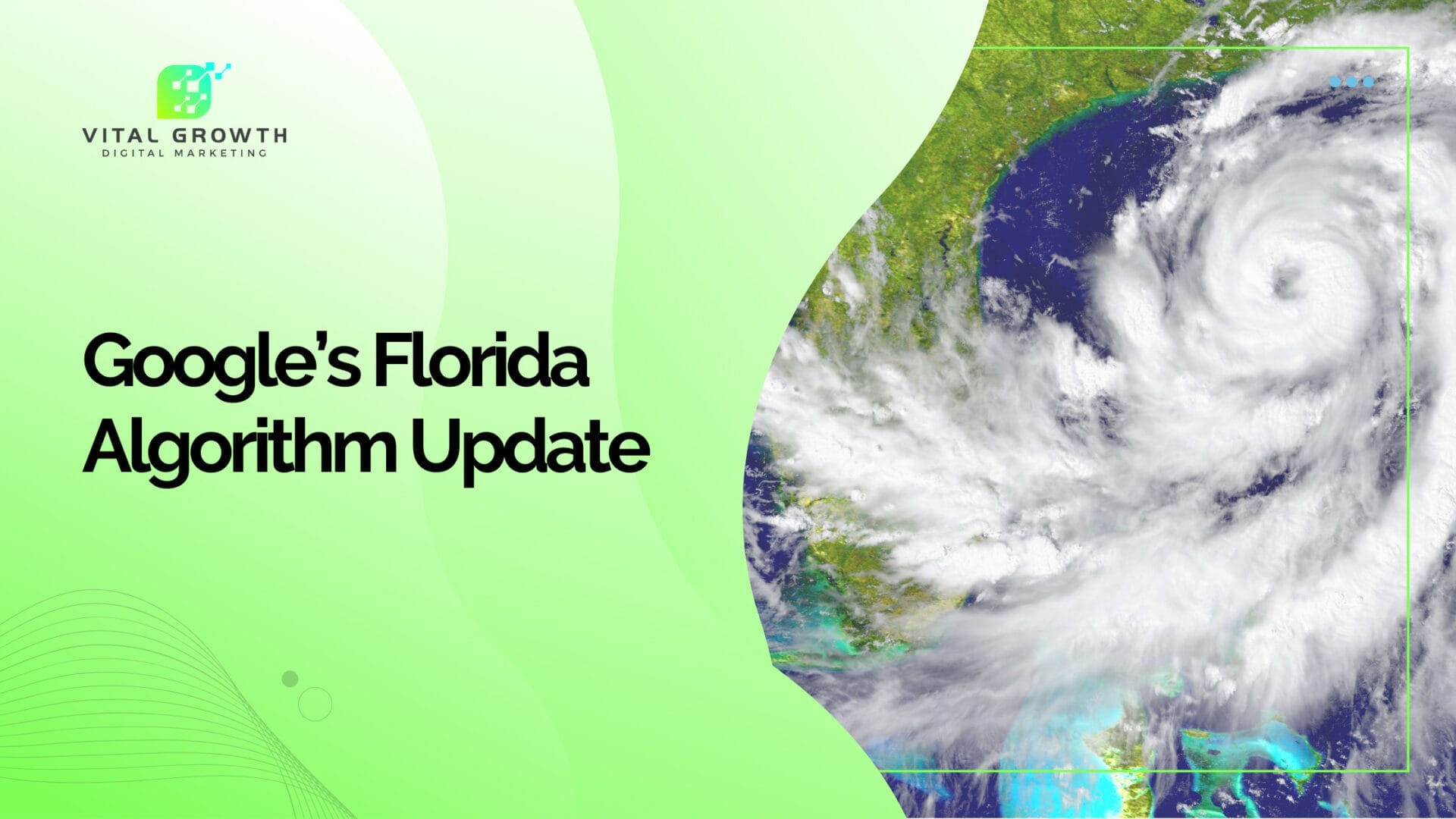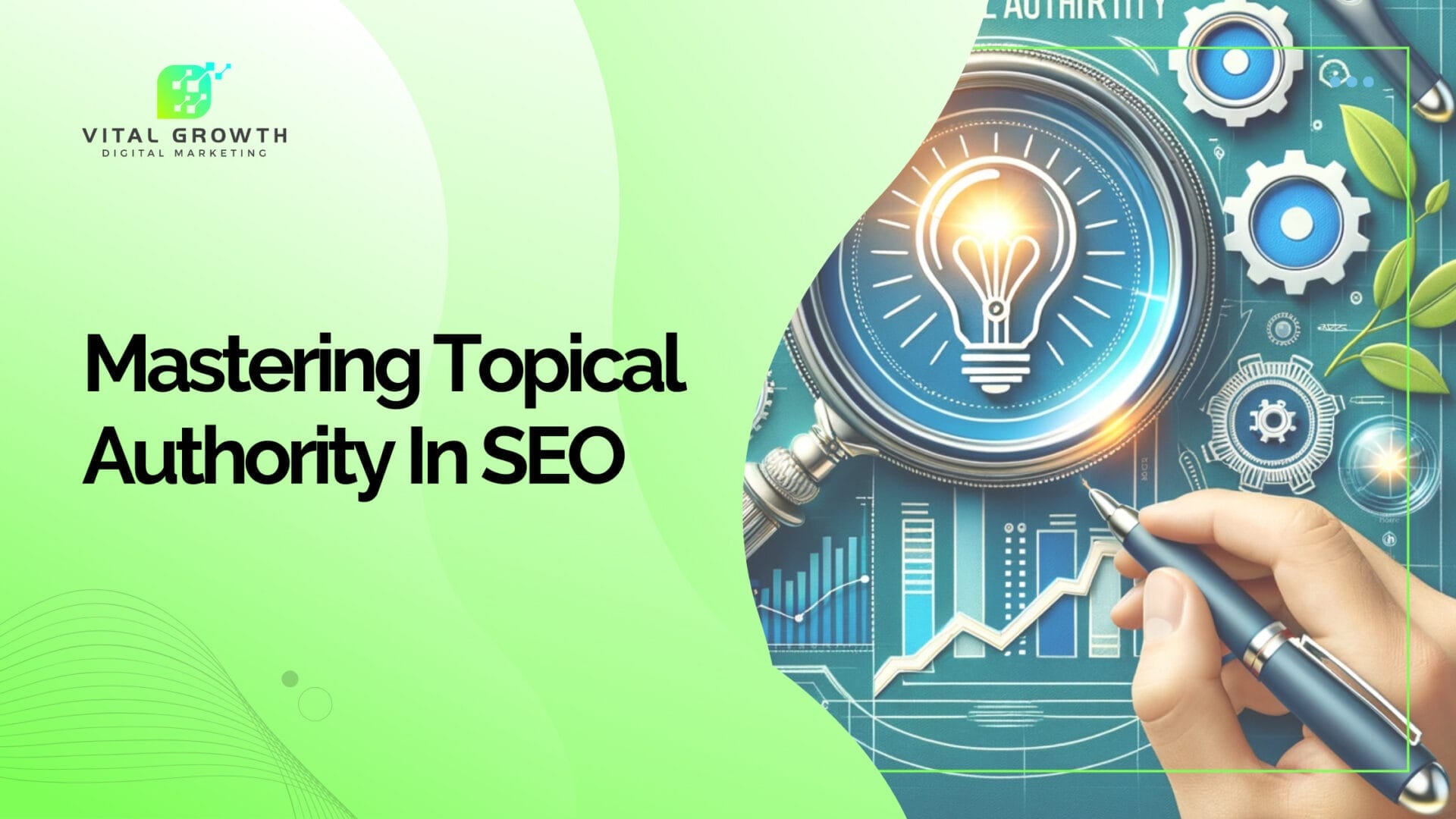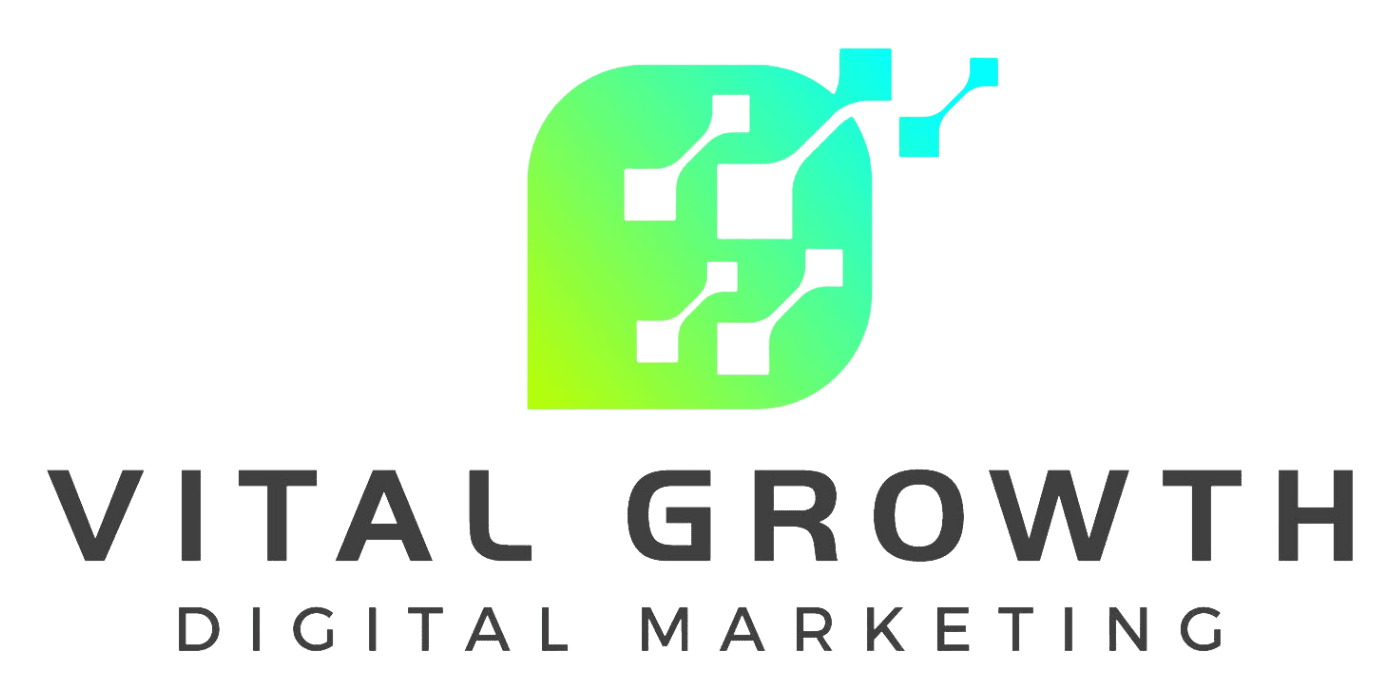If you’re a business owner looking to rise above the noise and attract consumers to your online webiste, you’ve got a powerful duo at your disposal: Search Engine Optimization (SEO) and Search Engine Marketing (SEM). These two strategies are like to two sides of a coin, each playing an important role in increasing your presence on search engine results pages.
In the simplest terms, search engine results are divided into two main categories: the paid search results and the organic search results. SEO is the art of optimizing your website to rank higher in the organic search results, while SEM is the science of leveraging both SEO and pay-per-click (PPC) strategies to attract traffic from search engines.
Essentially, SEO is about enhancing your website’s organic ranking, while PPC can get your website into the paid area of the search results. SEO is where you focus solely on ranking in the organic results, and SEM is when you utilize both SEO and PPC to drive traffic from search engines.
Therefore, SEM is a broader term that encompasses both SEO and PPC, which means that SEO falls under the umbrella category of SEM.
Now that we’ve set the stage, let’s look deeper into SEO vs SEM. We’ll start with SEO, which is the organic approach to enhancing your visibility on search engines. Understanding these concepts and how to leverage them effectively can be a game-changer for your business both on and off line.
Key Takeaways
- Organic SEO and Paid SEM have different cost implications. SEO is cost-effective in the long run, while SEM provides immediate visibility at a higher cost.
- Timeframes for results vary. SEM offers quick results, while SEO requires patience and consistent effort.
- The impact duration also differs. SEO offers enduring results, while SEM’s impact is tied to the ad campaign’s lifespan.
- A successful digital strategy balances budgets and resources between organic and paid efforts.
- Real-world examples highlight the potential of SEO/SEM to enhance visibility, traffic, and business success.
- SEO and SEM can be combined for a comprehensive digital marketing strategy, leveraging the strengths of both.
- Balancing resources between organic and paid efforts is crucial for a comprehensive digital marketing strategy.
- Avoid common mistakes, like neglect of ongoing optimization and failure to monitor performance, to maximize ROI.
- SEO and SEM are not competing strategies, but complementary approaches that can create a comprehensive digital marketing strategy.
Understanding Search Engine Optimization: The Organic Approach
Think of SEO as the gardener of your digital ecosystem, planting seeds (keywords) and nurturing your website to grow organically in the fertile soil of search engine results. It’s a process that involves a trio of tactics: on-page, off-page, and technical SEO.
You might question the necessity of this process, The answer is simple: to claim your spot in the sun, or more specifically, high in the organic search results. These are the websites that show up naturally in Google’s search results, without the need for payment. The goal of SEO is to help your website climb to the top of these organic listings, drawing more traffic and potential customers to your digital doorstep.
On-Page SEO
On-Page SEO is like the interior decorator of your website. It focuses on making your website relevant and appealing to both visitors and search engines. It’s all about aligning your content with the intentions of your target audience. Think of it as speaking the language of your customers, using the keywords they use when searching online.
This form of search engine optimization involves fine-tuning your content and meta tags, ensuring they are rich with the right keywords and are engaging enough to capture attention. It’s a delicate balance between appealing to your audience and satisfying the algorithms of search engines. However, when implemented correctly, it greatly improves your search engine rankings.
Off-Page SEO
While on-page SEO spruces up the interior of your website, off-page SEO is like your public relations manager, building your reputation online. It’s about creating connections and trust signals from external websites to your own.
This primarily involves constructing high-quality backlinks to your website, which act like votes of confidence from other websites. The more high-quality backlinks you have, the more search engines trust your website, which can significantly boost your organic rankings.
Technical SEO
Technical SEO is the invisible force behind your website, ensuring it runs smoothly and efficiently for both users and search engines. It involves fine-tuning the nuts and bolts of your website – its loading speed, architecture, and ability to be crawled and indexed by search engines.
This might seem like a lot of geek speak, but it’s important for your website’s performance on search engines. If search engines can’t access or understand your website, it’s like having a beautifully decorated store with the doors locked shut. It’s important to get the technical aspects right to make sure your website gets the visibility it deserves.
Understanding Search Engine Marketing: The Paid Approach
Having explored SEO, we will now transition to search engine marketing (SEM). If SEO is the gardener, SEM is the advertising billboard on the highway of search engines, catching attention and directing traffic to your website. In contrast to SEO, SEM involves paid tactics like Google Ads and Bing Ads. With a combination of SEM and SEO strategies, you can maximize your online visibility and reach your target audience effectively.
The advantage of SEM lies in its prompt results delivery. You can adjust the timing of ads, target specific audiences, and drive clicks and conversions in a much shorter span than SEO. However, this rapid visibility comes with a price tag, making SEM a more direct investment in your visibility on search engines.
Google Ads
As the kingpin of search engines, Google holds a treasure trove of paid advertising opportunities through Google Ads. This platform allows businesses to bid on keywords and create targeted search ads, placing them directly in the path of potential customers.
Google Ads account management necessitates a thoughtful approach to factors such as:
- Keyword targeting
- Ad quality Score
- Return on investment (ROI)
- Conversion rates
It’s also important to have the ability to quickly launch various web pages and conduct A/B tests to determine which pages perform best.
Bing Ads
While Google may be the leading player in the search engine market, let’s not forget about Bing Ads. Bing Ads is another platform for pay-per-click (PPC) advertising, offering similar features and benefits as Google Ads.
Bing Ads provides more detailed targeting options, usually faces less competition, and offers lower cost-per-click (CPC) rates. While Google Ads may have a higher click-through rate (CTR), Bing Ads can be a cost-effective alternative, especially for small businesses.
SEO vs SEM: Comparing The Differences
Having individually examined SEM SEO, we will now compare them. While they share a common goal of boosting visibility on search engines, their approach and outcomes differ in several key aspects.
The main differences lie in their cost considerations, timeframes for results, and the longevity of their impact. These factors play a significant role in determining whether to focus on SEO, SEM, or a combination of both in your digital marketing strategy.
Cost Considerations
When it comes to cost, SEO often wins the marathon, proving more cost-effective over time. It’s like investing in a well-built foundation for your home, where the initial costs might be high, but the long-term savings are significant.
Alternatively, SEM resembles renting a prime advertising space on search engine results pages. The visibility and traffic are immediate, although the costs accumulate with each ad click.
Timeframes for Results
In the race for results, SEM is the sprinter, providing immediate visibility and traffic through paid ads. It’s like flipping a switch and seeing instant results. However, these results depend on your ad spend and will disappear as soon as the ads are paused or the budget is depleted.
On the other hand, SEO is the long-distance runner, requiring patience and persistent effort to yield organic results. It’s a gradual climb to the top of search engine rankings, but the results are long-lasting and self-sustaining, as long as you are doing things correctly and ethically.
Longevity of Impact
Speaking of long-lasting results, SEO stands out for its enduring impact. A well-optimized website can maintain its high rankings on search engine results pages for a long time, continuously drawing organic traffic.
In contrast, the visibility offered by SEM is temporary, tied to the lifespan of your ad campaigns. Once you stop your ads or run out of budget, your visibility drops. However, the instant visibility and specific audience targeting offered by SEM can be invaluable for businesses looking for quick results or during peak seasons.
Also, it should be noted that while paid ads may cost you more up front, when fine-tuned, they can pay for themselves many times over.
Combining SEO and SEM
Despite the unique strengths and differences of SEO and SEM, they are not mutually exclusive. In fact, when combined, they can create a complete digital marketing strategy that maximizes visibility, reaches a wider audience, and optimizes overall marketing efforts.
The combination of organic and paid efforts can lead to a robust digital marketing strategy. A strong SEO strategy can boost the success of your SEM campaigns, while SEM can provide valuable keyword insights for your SEO efforts.
Synergy Between Organic and Paid Efforts
A strong SEO strategy can serve as a solid foundation for your SEM campaigns. It can help you identify high-performing keywords, create more engaging content, and improve your website’s user experience.
At the same time, SEM can provide instant visibility for your website while you build your organic rankings through SEO. It can also offer valuable insights into keyword performance and user behavior, helping to refine your SEO strategy and content.
Even if you are ranking in the top spots organically, you can potentially “monopolize” the first pages of search engines by occupying more than one spot on the search engine results pages.
Balancing Budgets and Resources
Balancing resources between organic and paid efforts is a critical aspect of a complete digital marketing strategy. By aligning your budget and resources with your objectives and key performance indicators, you can maximize the effectiveness of your SEO and SEM efforts.
A balanced approach enables the optimization of your comprehensive marketing efforts. You can allocate resources to create high-quality content for SEO, while also investing in targeted ads for immediate visibility and results through SEM.
Real-World Examples: Success Stories in SEO and SEM
To demonstrate the efficacy of SEO and SEM, we will consider some practical success stories. These examples showcase businesses that have soared to new heights through their effective implementation of SEO and SEM strategies.
From small startups to global giants, these companies have demonstrated how a well-planned and executed SEO and SEM strategy can boost visibility, drive traffic, and ultimately, lead to business success.
SEO Success Story
We will begin with a success story from the scope of SEO. Etsy, the online marketplace for handmade and vintage items, saw a significant increase in organic search rankings through a targeted optimization effort.
By focusing on keyword research, on-page optimization, and technical improvements, Etsy managed to climb the ranks of search engine results and attract more organic traffic to their website. This led to a substantial boost in visibility and sales, demonstrating the potential of a well-executed SEO strategy.
SEM Success Story
Switching gears to a different industry, let’s consider the success story of a local fishing charter business. Initially, this company relied heavily on SEM and PPC ads, using Google Ads to gain immediate visibility and attract customers. By selecting keywords relevant to their services and crafting engaging ad copy, they were able to drive significant web traffic and bookings.
However, recognizing the long-term cost-effectiveness of SEO, they decided to transition their strategy. They began focusing on optimizing their website content, using relevant keywords, improving site navigation, and creating engaging, informative content about their fishing trips and local fishing conditions.
Over time, their website began to climb the ranks of organic search results. As their organic visibility increased, they were able to gradually reduce their reliance on paid ads. Eventually, they were ranking high enough organically that they could completely phase out their paid advertising, resulting in substantial cost savings.
This transition from SEM to SEO didn’t happen overnight, but with patience and a well-executed strategy, the fishing charter business was able to maximize their visibility while significantly reducing their marketing costs. Their story demonstrates the potential of combining SEM and SEO, and the benefits of a well-planned digital marketing strategy.
Common Mistakes to Avoid in SEO and SEM
Despite the immense potential of SEO and SEM, the risk of mistakes remains if not handled cautiously. Some common pitfalls include lack of ongoing optimization, failure to monitor performance, and not balancing resources between organic and paid efforts.
Avoiding these mistakes and following best practices can enhance your SEO and SEM efforts and maximize your investment return. Remember, the key to success in digital marketing lies in continuous learning, staying updated with the latest trends, and constantly refining your strategies based on performance data.
Summary
To navigate the digital landscape successfully, it’s essential to understand and leverage the power of both SEO and SEM. These two strategies, though different in their approach, are not competitors but allies in the quest for online visibility. SEO, with its focus on long-term organic growth, is akin to a gardener nurturing a garden, patiently waiting for seeds to sprout and grow. SEM, on the other hand, is like a billboard on a busy highway, grabbing immediate attention and directing traffic to your website. Both have their unique strengths and can be effectively utilized based on your specific goals and resources.
In this guide, we’ve talked about the intricacies of SEO and SEM, explored real-world success stories, and highlighted common mistakes to avoid. We’ve also demonstrated the synergy when these two are combined, creating a robust digital marketing strategy that maximizes visibility and optimizes overall marketing efforts.
Remember, the journey through the digital landscape may seem complex, but with the right knowledge and tools, it can be navigated successfully. So, take the insights from this guide, apply them strategically, and watch your business thrive in the digital realm. You’re now equipped with a holistic understanding of SEO and SEM, ready to harness their potential and propel your online presence to new heights.
What is difference between SEO & SEM?
The main difference between SEO and SEM is that SEO focuses on optimizing a website for higher rankings and traffic in organic search results, while SEM includes both organic search and paid advertising to attract traffic. Both approaches aim to increase visibility and ranking in search engine results pages (SERPs).
Is SEM more effective than SEO?
SEO is an organic approach to website visibility, while SEM is a targeted strategy that involves paid advertisements. SEO takes more time to achieve results than SEM, though both can be complementary if the website itself is SEO-friendly. Ultimately, the effectiveness of either strategy depends on your goals and budget.
Is SEO or SEM paid?
SEM (Search Engine Marketing) is a paid service, as advertisers pay to have their ads show up in search results. SEO (Search Engine Optimization), however, is the practice of optimizing a website’s presence in organic results without the need to pay for placement.
What is the difference between SEO specialist and SEM specialist?
SEO involves optimizing web pages for higher rankings in organic search results, while SEM focuses on organic and paid search optimizations to achieve higher rankings. SEM also involves investing in search engine ads with the goal of persuading consumers, while SEO specialists create keyword-enriched content hoping that both search engines and consumers find it useful.
How does On-Page SEO work?
On-Page SEO involves optimizing your website and content to make it relevant and appealing to both visitors and search engines, by aligning the content with the search intent of the target audience and using the right keywords.
